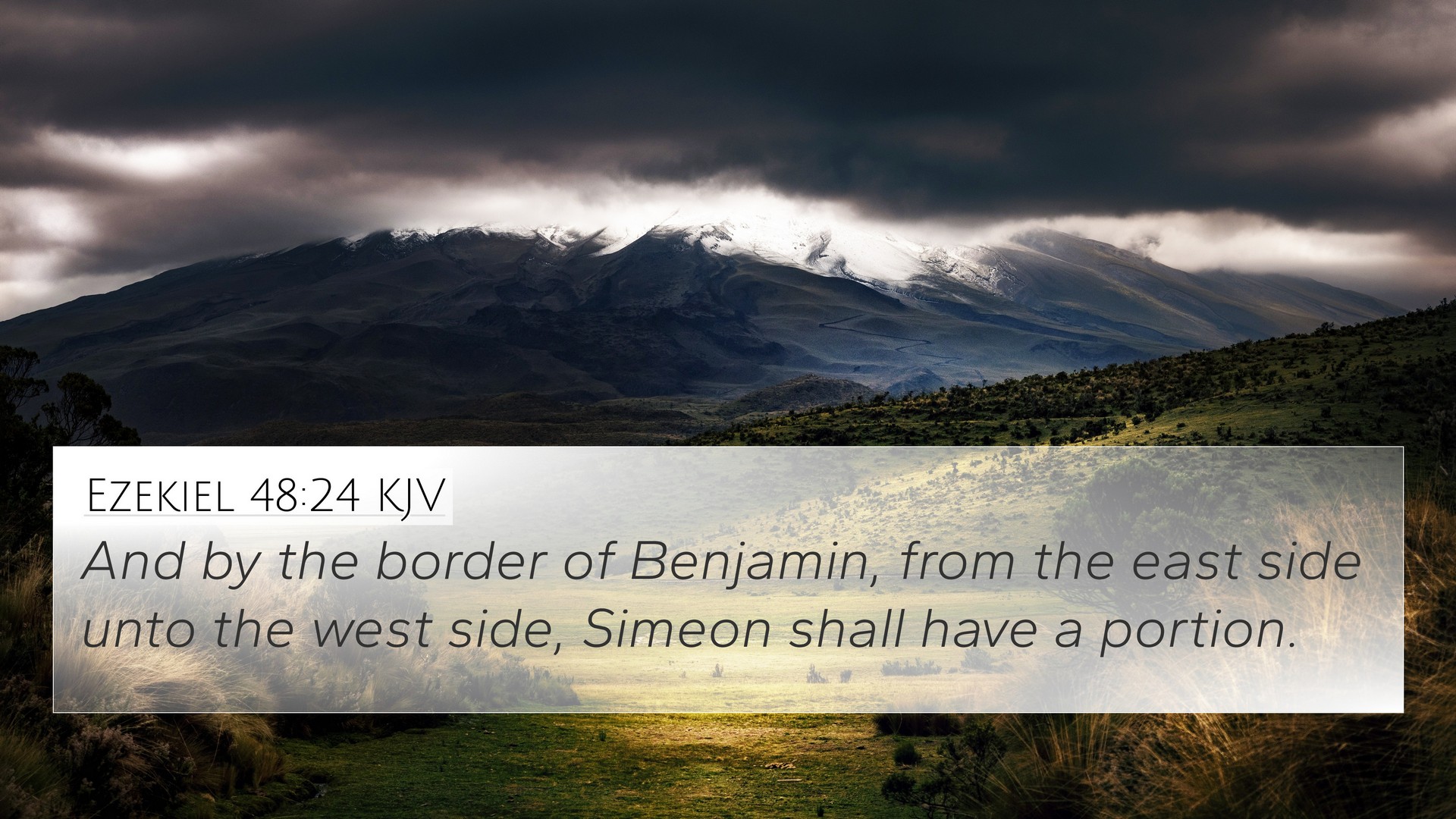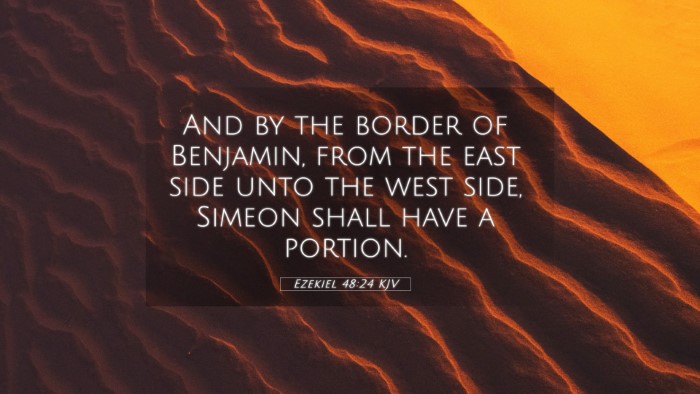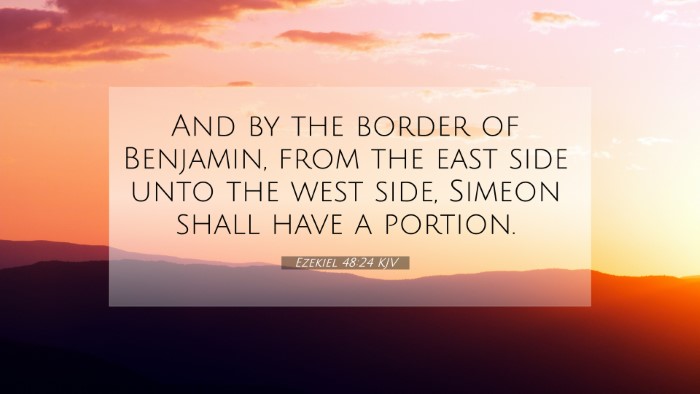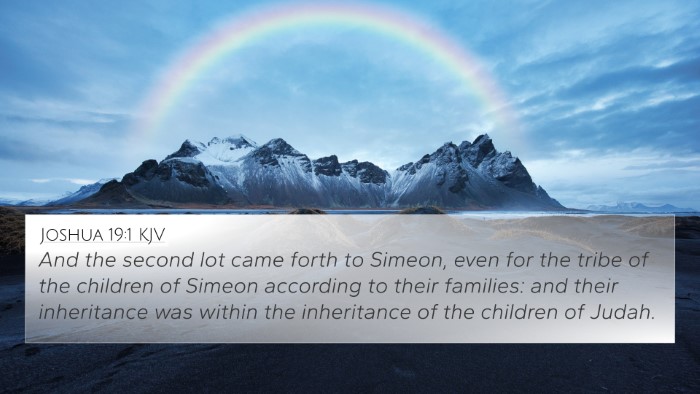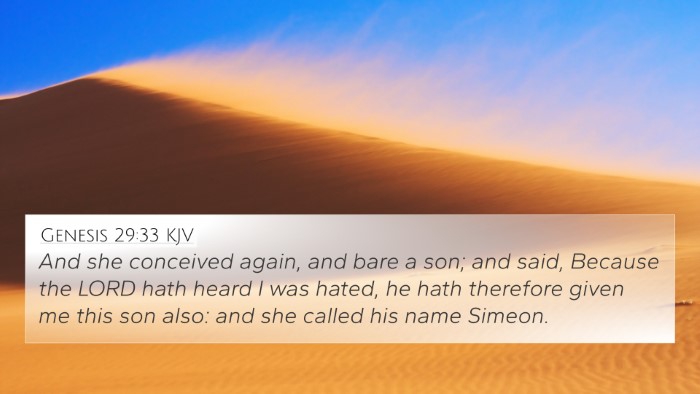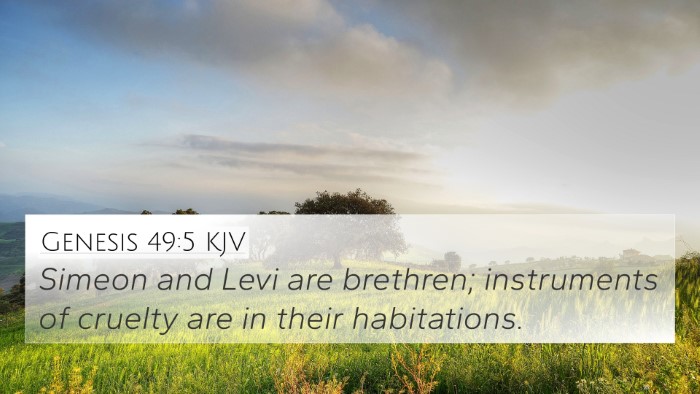Ezekiel 48:24 - Interpretation and Meaning
Ezekiel 48:24 states: "And beside the border of Judah, from the east side unto the west side, shall be the offering which ye shall offer of five and twenty thousand cubits in breadth, and in length as one of the other parts, from the east side unto the west side: and the sanctuary shall be in the midst of it."
This verse is a part of Ezekiel's vision regarding the distribution of land in the restored Israel, emphasizing the divine arrangement of the territory allotted to the tribes. It specifically mentions the offering allotted to the tribe of Judah, highlighting both the geographical and spiritual significance of the land and the sanctuary within it. Here, we see thematic connections, where the land not only represents physical territory but also embodies God's covenant with His people.
Key Insights from Commentaries
-
Matthew Henry:
Henry notes that the arrangement of land in Ezekiel's vision represents the integrity of community among God's people and demonstrates God's perfect order. The sanctuary is placed centrally to symbolize God’s presence among His people, reinforcing the notion that He is at the heart of their lives.
-
Albert Barnes:
Barnes states that the designated offering emphasizes the importance of an organized worship structure where the sanctuary remains pivotal. This allocation showcases the deliberate design God has for His people, ensuring that worship and service are prioritized within their community life.
-
Adam Clarke:
Clarke elaborates on the measurements of the land and the offering, indicating their symbolic representation. He emphasizes that the divine order is followed in all things, showcasing God's meticulous care for His people. Clarke also highlights the theological implications that such structure in worship and community would have on their covenant relationship with God.
Cross-References and Thematic Connections
This verse relates to several other scriptures providing deeper understanding through cross-references:
- Ezekiel 45:1-6: Discusses the allocation of land and offerings in the context of the temple and worship.
- Hebrews 11:16: Speaks of the better country that believers anticipate, correlating with the idea of God’s promised land for His people.
- Revelation 21:2: Mentions the new Jerusalem, reflecting God's ultimate plan for His people and the presence of central worship.
- Nahum 1:7: Affirms God’s protective presence among His people, tying into the significance of the sanctuary mentioned in Ezekiel.
- Psalm 46:4-5: Highlights the importance of God's presence in the midst of His people, aligning with the theme of centrality in worship.
- Isaiah 54:3: Discusses the expansion of God’s territory, connecting with the theme of the promised land in Ezekiel.
- Zechariah 2:10: Recognizes the Lord’s presence among His people, reinforcing the idea from Ezekiel about the sanctuary being central.
Understanding the Context and Importance
The verse in Ezekiel 48:24 holds immense significance as it illustrates the communal aspect of worship and the designated spaces for God’s service. It also establishes connections between multiple books, affirming continuous divine themes throughout the scriptures.
How to Use Cross-References:
- Utilize a Bible concordance to find relevant passages that relate to Ezekiel 48:24.
- Conduct a comparative Bible verse analysis by reading each cross-reference to see how they influence understanding of the original verse.
- Engage in cross-referencing Bible study methods by journaling parallels and themes that arise from different passages.
- Explore thematic Bible verse connections to analyze living out the principles conveyed in multiple scriptures.
Conclusion
In exploring Ezekiel 48:24 and its rich context, we find that the Bible encourages an active engagement with its texts through cross-referencing. The arrangement of land and the emphasis on the sanctuary remind us of God's covenant promises and His desire for a close relationship with His people, which resonates throughout both the Old and New Testaments.
